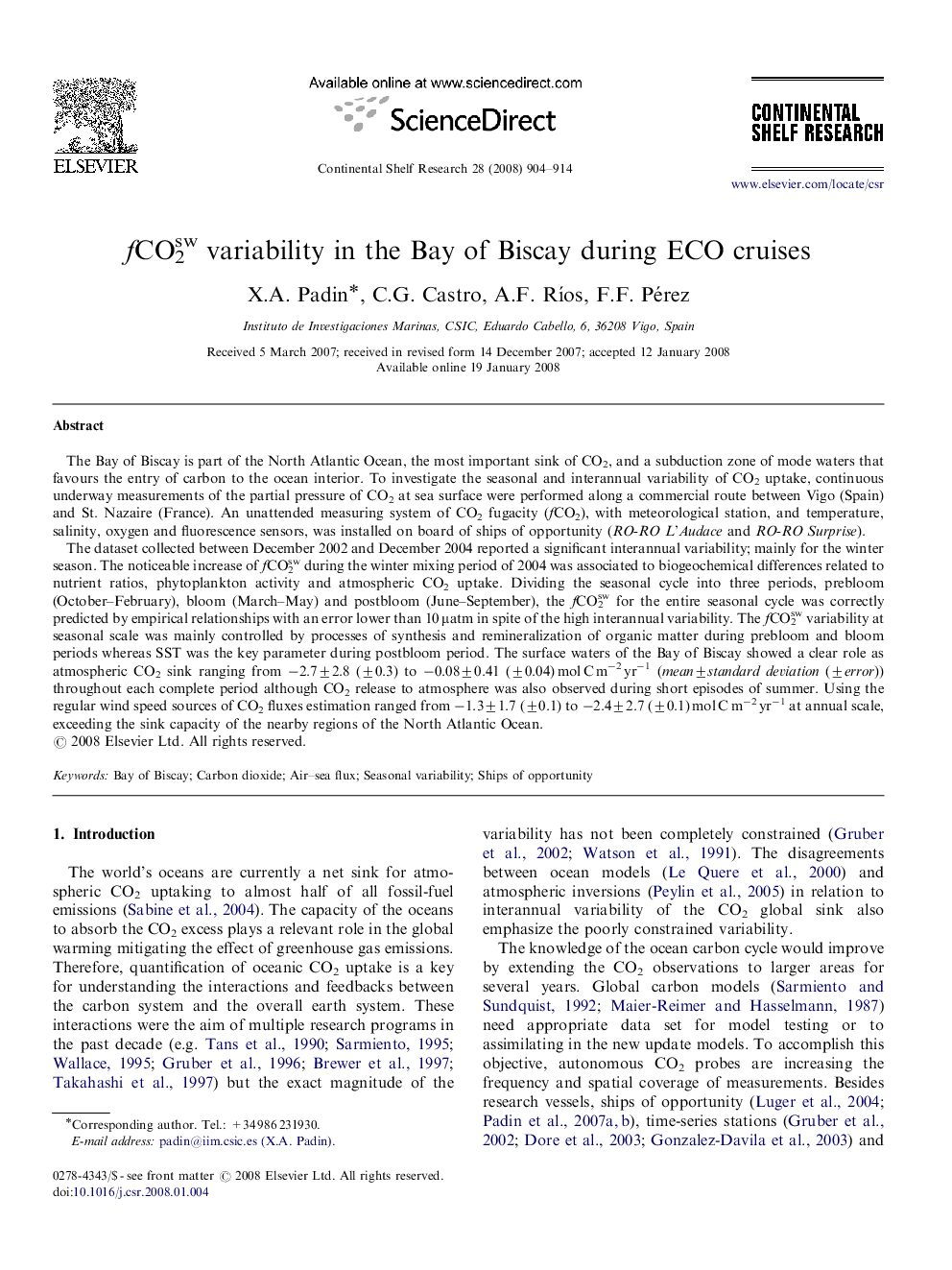| Article ID | Journal | Published Year | Pages | File Type |
|---|---|---|---|---|
| 4533228 | Continental Shelf Research | 2008 | 11 Pages |
Abstract
The dataset collected between December 2002 and December 2004 reported a significant interannual variability; mainly for the winter season. The noticeable increase of fCO2sw during the winter mixing period of 2004 was associated to biogeochemical differences related to nutrient ratios, phytoplankton activity and atmospheric CO2 uptake. Dividing the seasonal cycle into three periods, prebloom (October-February), bloom (March-May) and postbloom (June-September), the fCO2sw for the entire seasonal cycle was correctly predicted by empirical relationships with an error lower than 10 μatm in spite of the high interannual variability. The fCO2sw variability at seasonal scale was mainly controlled by processes of synthesis and remineralization of organic matter during prebloom and bloom periods whereas SST was the key parameter during postbloom period. The surface waters of the Bay of Biscay showed a clear role as atmospheric CO2 sink ranging from â2.7±2.8 (±0.3) to â0.08±0.41 (±0.04) mol C mâ2 yrâ1 (mean±standard deviation (±error)) throughout each complete period although CO2 release to atmosphere was also observed during short episodes of summer. Using the regular wind speed sources of CO2 fluxes estimation ranged from â1.3±1.7 (±0.1) to â2.4±2.7 (±0.1) mol C mâ2 yrâ1 at annual scale, exceeding the sink capacity of the nearby regions of the North Atlantic Ocean.
Related Topics
Physical Sciences and Engineering
Earth and Planetary Sciences
Geology
Authors
X.A. Padin, C.G. Castro, A.F. RÃos, F.F. Pérez,
